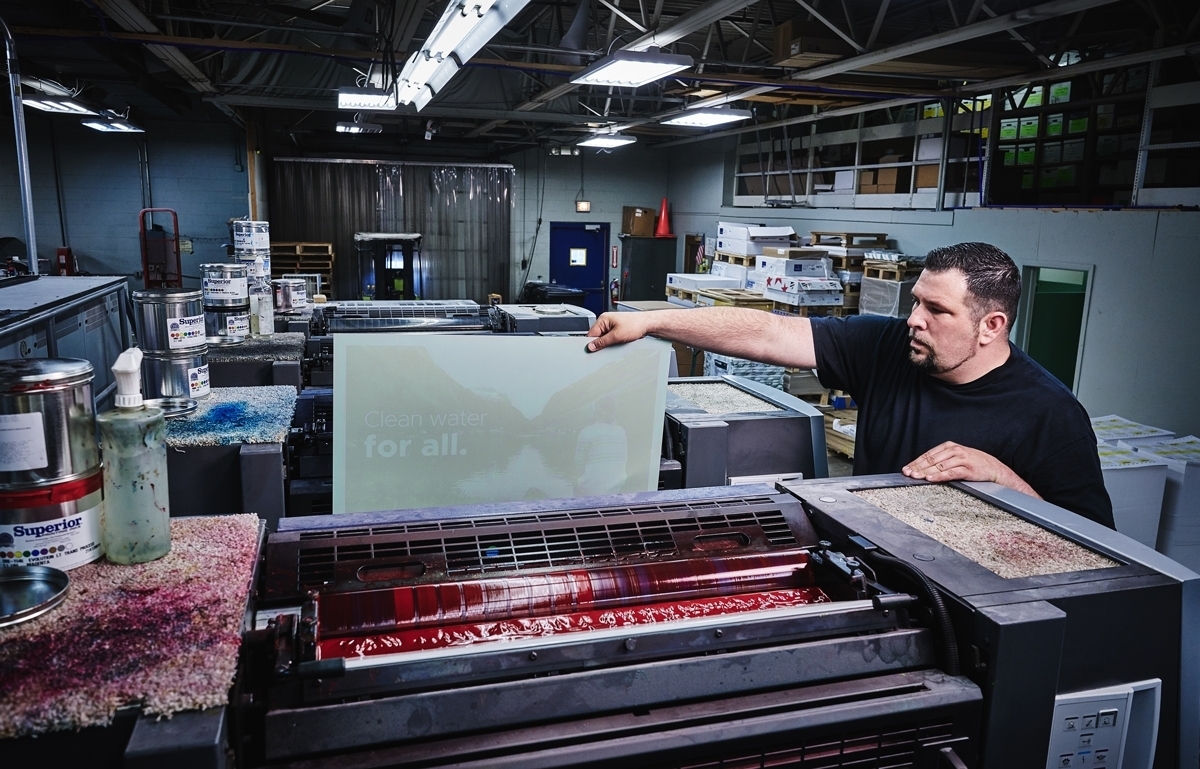A New Year, A New Plate

A new year is an excellent time to make changes, and with the recent technology advances around process free plate making, 2019 could be the year that you boost your profitability by switching to the new SONORA X Process Free Plate.
In general, process free plates eliminate all the costs and variability of processing. The cost savings are significant, and no one likes the hassle of chemistry and plate processing. So why haven’t all printers moved to process free plates?
Well, change is hard, and before KODAK SONORA X Plates, process free plates weren’t for everyone. With the new technology behind SONORA X Plates, the situation has now changed. Up to 80% of printers should be able to use SONORA X Plates, so it’s time for all printers to get educated about what process free could do for their business.
To start the process, below are some of the most frequent questions printers are asking about SONORA X Plates.
What are the main benefits that SONORA X Plates will deliver for my business?
SONORA X Plates deliver:
- Economic benefits: You will be able to eliminate the costs of processing, including chemistry and waste disposal, energy, water and processor maintenance. You will also remove the costs of processing variability, including press downtime, waste paper and ink, and plate remakes.
- Environmental benefits: You will be able to eliminate processing chemistry, including handling and disposal, and reduce your operation’s water and energy usage. You can also promote these environmental benefits to your print customers looking for more sustainable vendors.
- Efficiency and quality benefits: Prepress operations will be more streamlined and efficient with the elimination of the processing step, and the plates that go to the pressroom will be more consistent, now that the variability of processing is gone. Also, because of the increased stability of process free plates compared to processed plates, many printers are reporting more consistent and accurate colors in the final print output.
What’s special about SONORA X Plates compared with other process free plates?
A new breakthrough in technology has made SONORA X Plates comparable to most unbaked processed plates in terms of performance, so they offer long run lengths, fast imaging speeds, excellent resolution capabilities, good scratch resistance, and UV capability. Now up to 80% of offset printers, including large commercial sheetfed printers, high-quality printers, large heatset web printers, book printers, offset packaging printers, newspaper printers, and printers using UV or low-energy UV, will be able to move away from plate processing.
How are SONORA X Plates different from chemistry-free plates? Don’t they both get rid of chemistry?
Actually, “chemistry-free” plates still use chemistry and processing equipment (the clean-out unit). While “chemistry-free” plates simplify the processing step and may have benefits over processed plates, they don’t completely eliminate the steps, chemistry, and equipment of processing. Only true process free plates do, and therefore, only true process free plates offer the economic, environmental, and efficiency and quality benefits associated with eliminating processing.
Will I need to buy any new equipment, such as a new platesetter?
SONORA X Plates are qualified on all KODAK Platesetters and many third-party platesetters. They deliver maximum throughput capabilities on all but the fastest platesetters and work with both manual and fully-automated CTP systems, so they can keep up with fast-paced production environments.
What is the maximum line screen achievable with SONORA Plates? Also, can I use SONORA Plates to image stochastic screening?
SONORA X Plates are rated for 1 to 99% @ 200 lpi, and up to 450 lpi is possible, dependent upon the capability of the imaging device. The consistent and durable nature of the SONORA Plate coating was specifically engineered to handle the rigors of high resolution screening on a daily basis and can image 20-micron stochastic screening, dependent upon screening algorithms and device. For optimum FM performance, Kodak recommends KODAK STACCATO Screening on devices with KODAK SQUARESPOT Imaging Technology.
What about scratching?
SONORA X Plates were designed to resist scratching as well as or better than most unbaked wet processed plates. All plates are susceptible to scratching, so following best practices to avoid scratching is important for any plate.
What are the main benefits I will see in the pressroom when switching to SONORA X Plates?
The quality of plates coming out of prepress will be more consistent, now that the variability of processing is gone. The plate is no longer a variable you have to worry about when running the press. Some customers have reported savings through shorter makeready. Because of the increased stability of process free plates compared to processed plates, many printers are also seeing more consistent and accurate colors in the final print output.
Are SONORA Plates compatible with sheetfed presses and web presses? What about UV?
Yes. They work with both sheetfed and web presses. SONORA X Plates are qualified for up to 400,000 impressions for heatset and 200,000 for sheetfed applications, as well as 75,000 impressions with UV applications (including conventional UV, low-energy UV and LED-UV).
Will I need to change any of my other materials, such as inks, fountain solutions, substrates, or press chemicals?
SONORA Plates are compatible with a wide range of inks, fountain solutions, substrates, and press chemicals.
If you’re interested in learning more about SONORA X Plates and how they can benefit your printing operation, contact your Kodak representative or visit KODAK SONORA Process Free Plates.